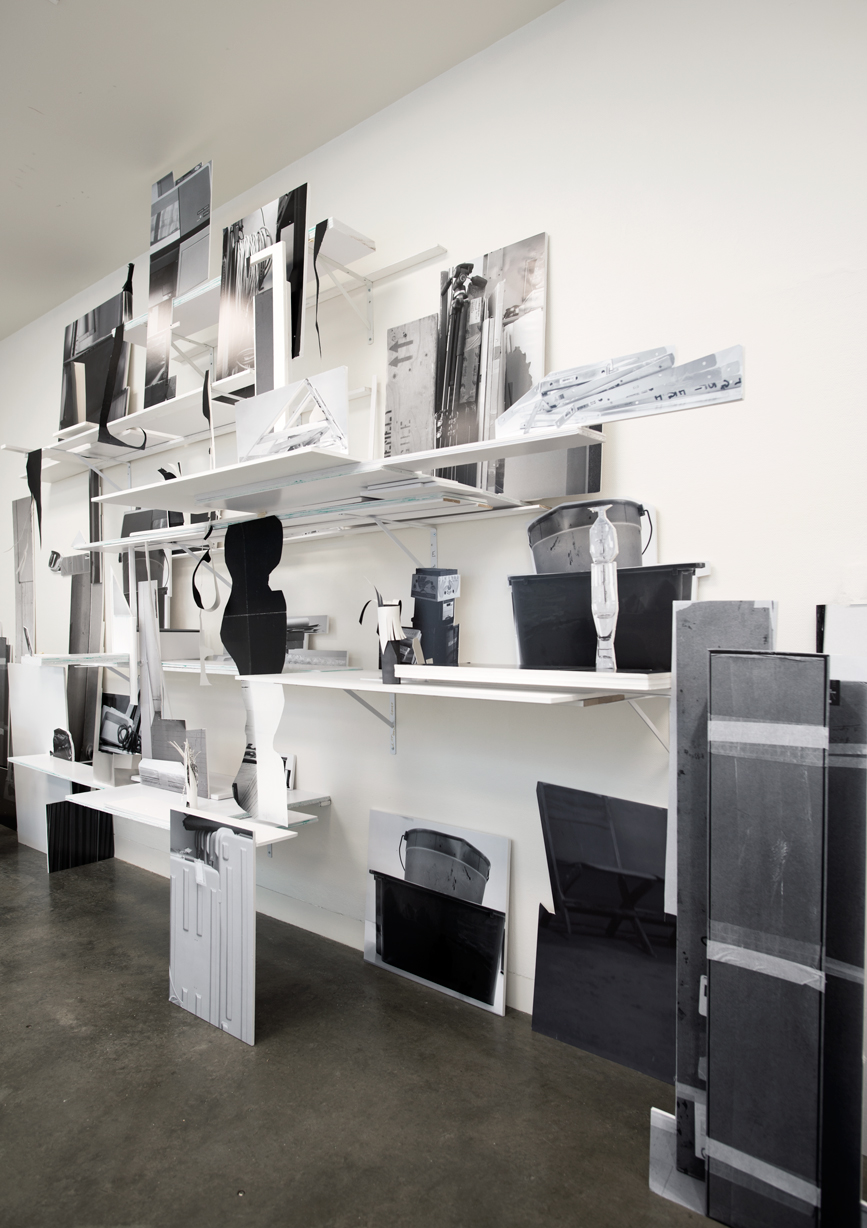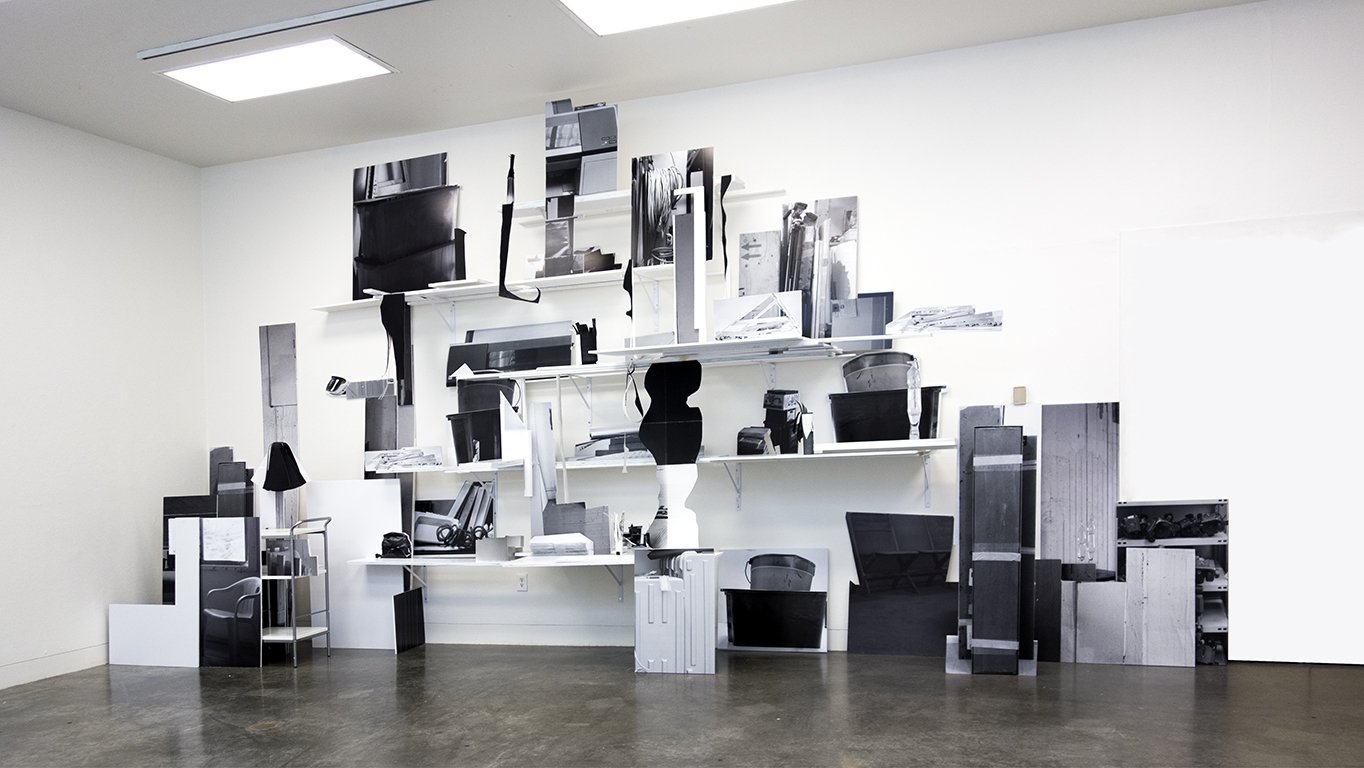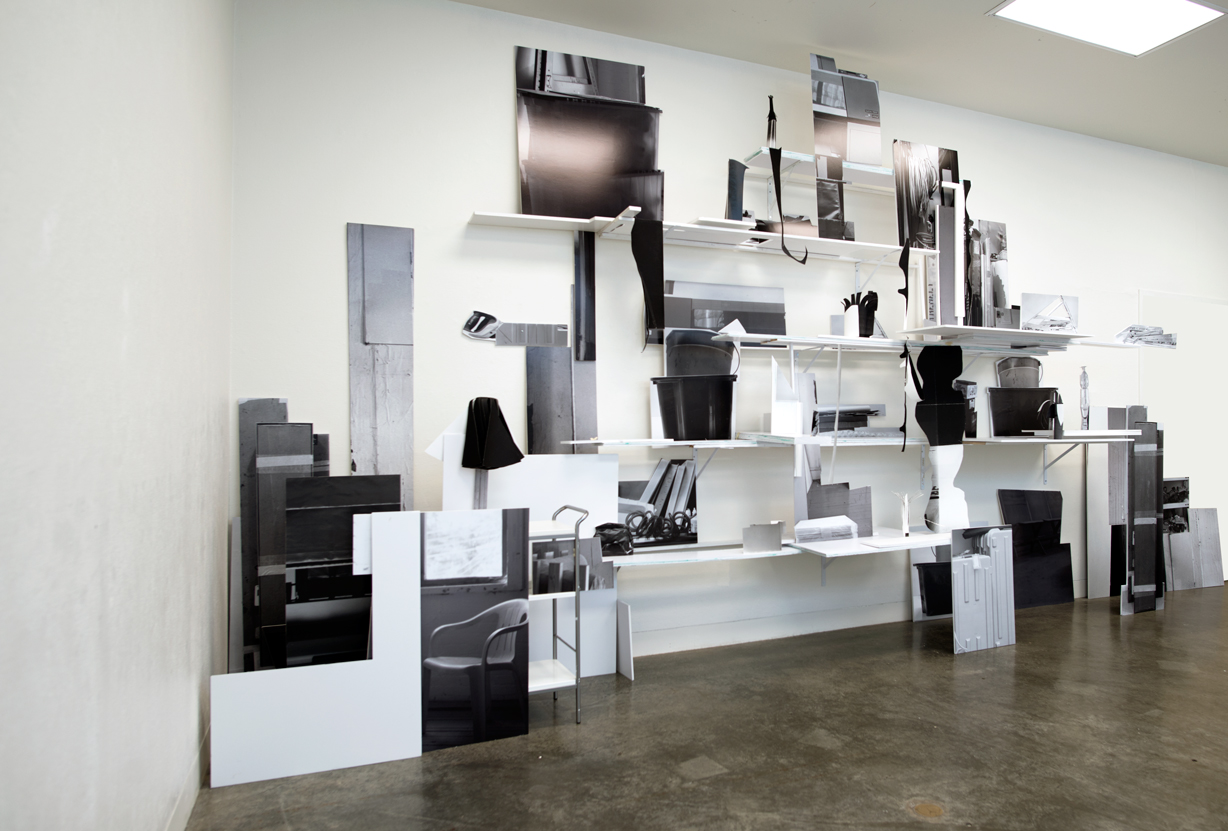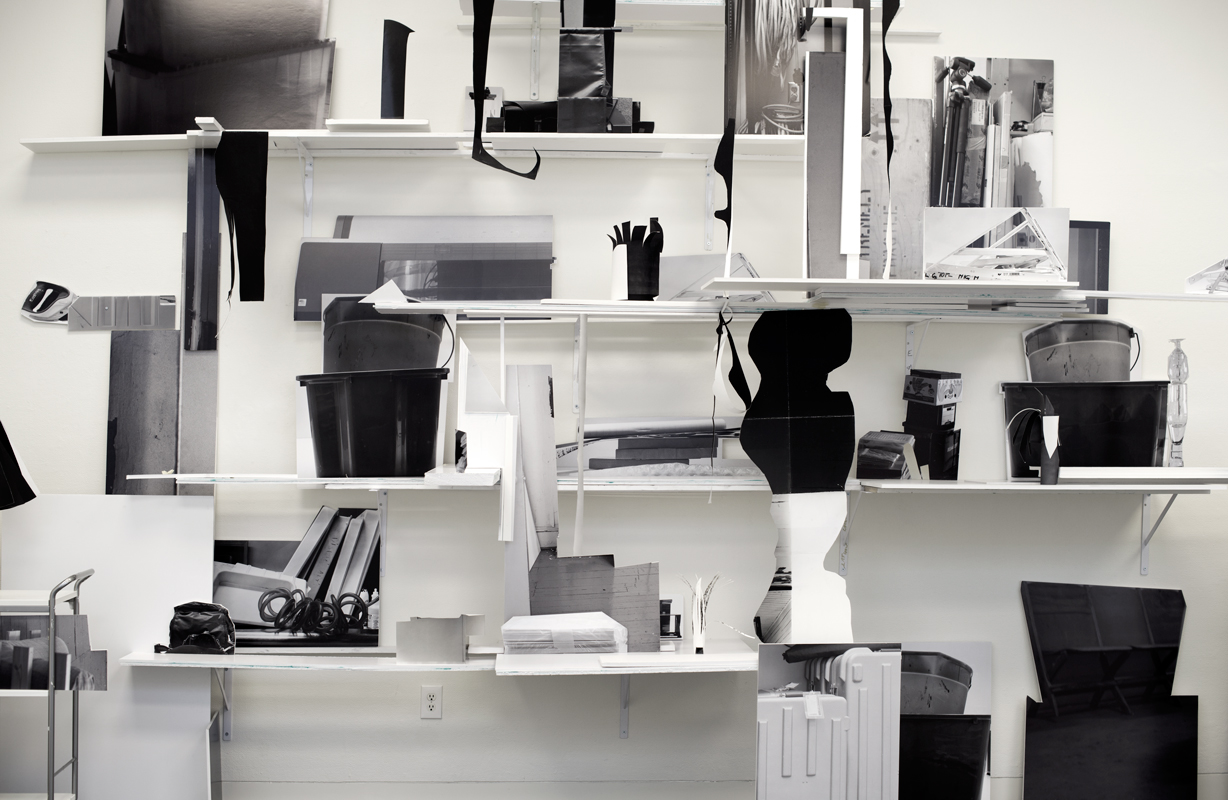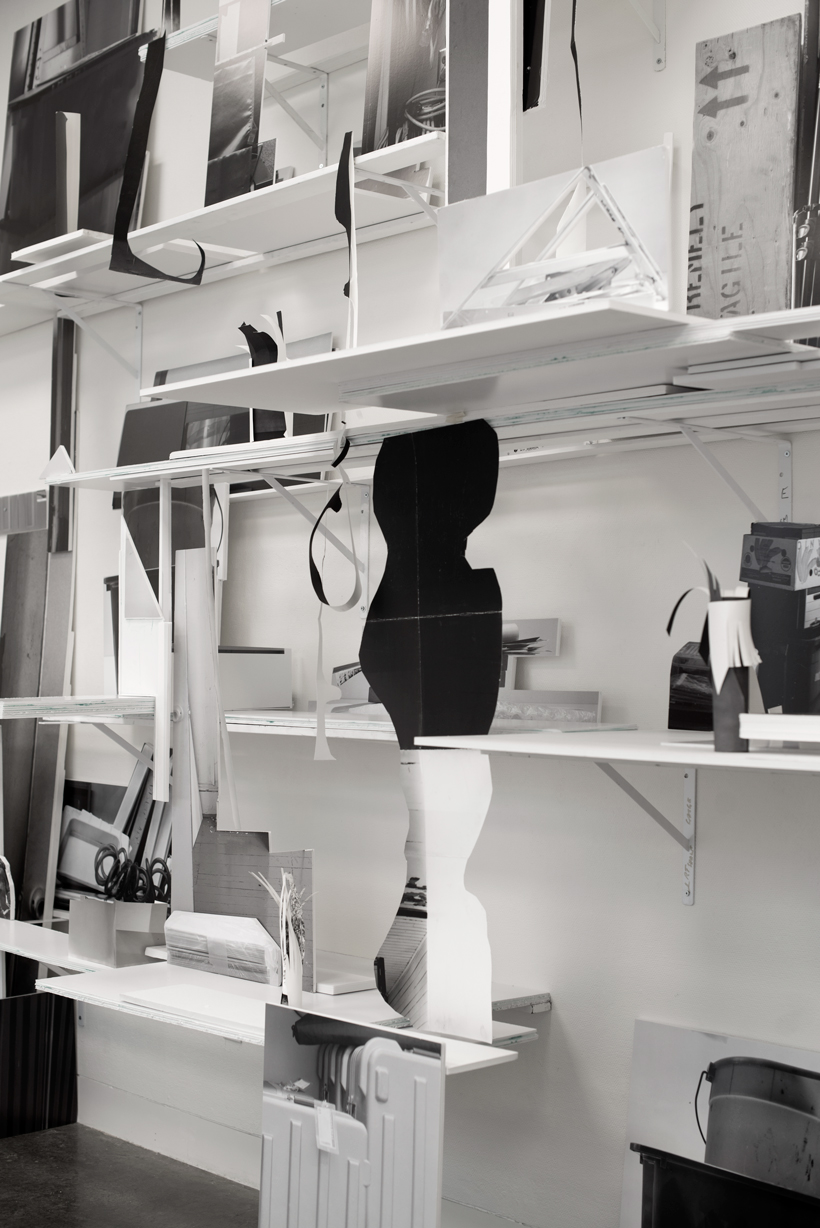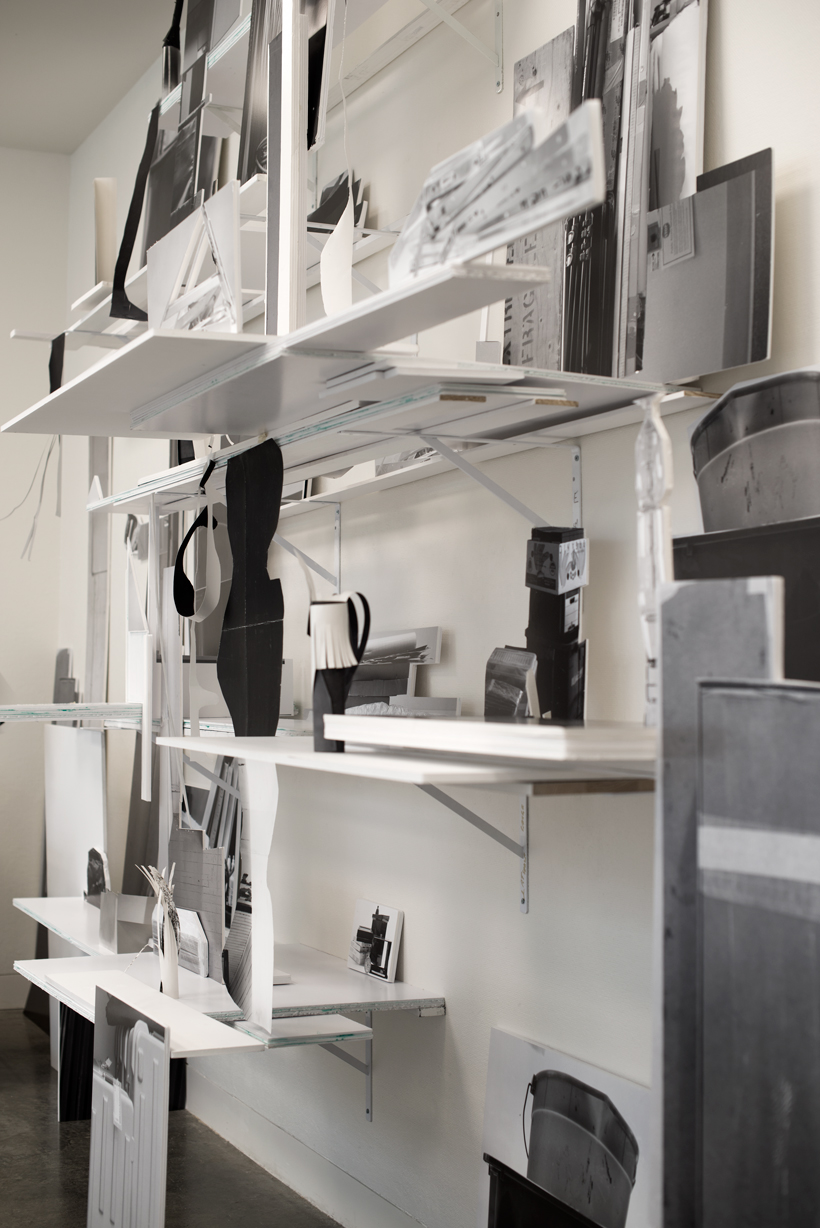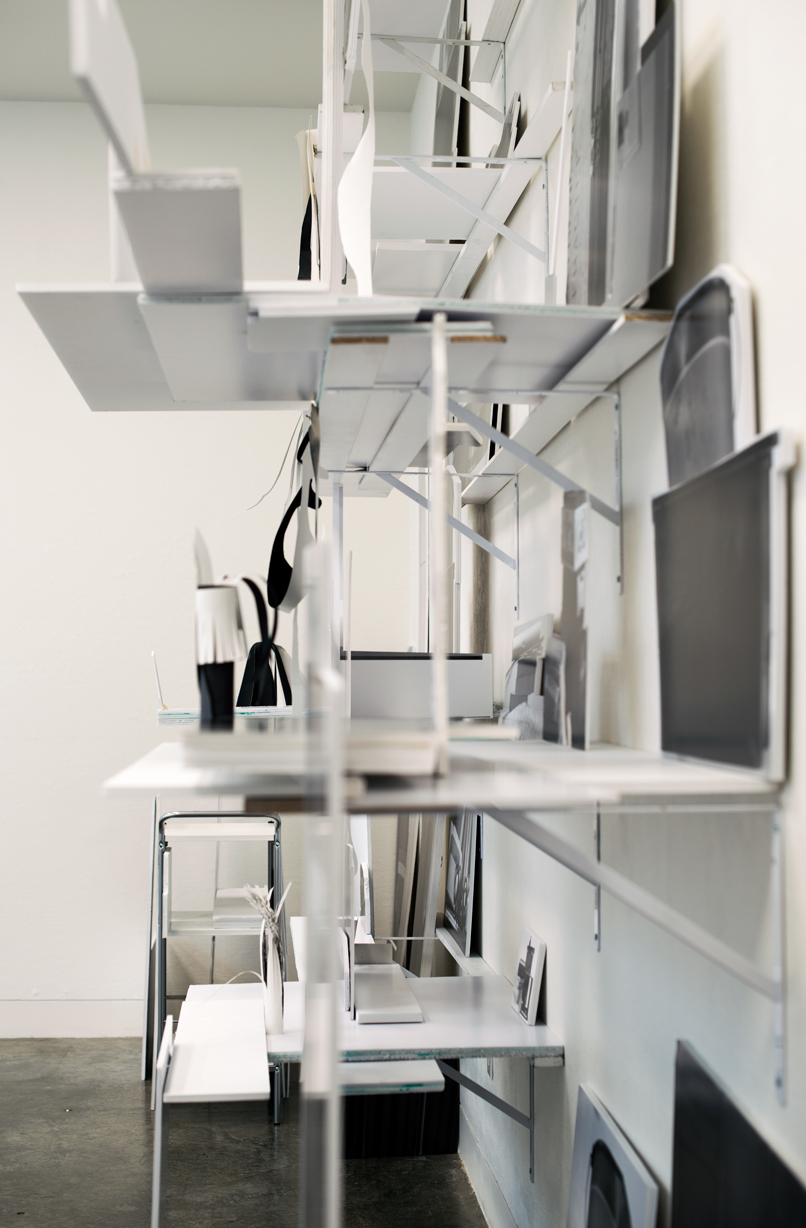PRACTICE (shelves) 2016-2017
Plastic storage bins, a hand saw, an Epson 44” digital printer, a chair, books, sketchbooks, developing trays, a camera, a film developing tank, buckets, fiber based photographic paper, books, bubble wrap, foam core, brown paper, fiber based mural paper in a cardboard container, hoses, film holders, a photographic lighting kit, boxes, a camera bag, tripods, metal shelf holders, wine glasses, a wooden crate, wire, glue, paint, a bottle of distilled water, and then the things I construct out of paper, glue, tape, cardboard and wood etc.
These ‘still life’ assemblages are art practice and at the same time are about art practice. Building upon my longstanding interest in the studio as a site of art making, I have shifted my attention towards the tools and materials of art production. The objects these photographs reference were once part of a lively flux of hands on activity in various sites from darkrooms to print labs to art studios etc. They are now static, frozen in the instant that the photograph was taken. Organized within a visual field, teetering between abstract forms and photographs of things in the world, these new objects become both the material and the subject for these ‘still life’ projects.
In speaking about art practice Mary Jane Jacobs says;
“Practice is about trying, developing, cultivating, improving. Practice connotes repetition: to practice, to perfect. To launch into and carry out a process without a stated outcome is to allow the process of inquiry to unfold, to trust the right way will arise, to wait, persevering through a blank open space. This deep awareness of the process of art – of self in process- is key to the creation/ the artist’s mind –in –making is not just the result of studied knowledge (getting the fact straight) or skills acquired; it is always determined by the actual process of making and the depth of awareness one brings to bear during the process. This awareness is what moves beyond the known for the self, for the viewer, and potentially for the society or culture at large”.
I meander around the studio taking pictures, pictures of the objects and materials that form a part of my everyday art practice. Later on I go to the darkroom at the university, then to the dry mounting room and the equipment sign-out room. Later that week I am shopping at Industrial Plastics and I photograph a stack of foam core; then at Lens and Shutter I photograph packages of fiber-based paper. Everywhere I encounter objects and materials that I use to make my work and as I click the camera lens the objects reflect their light onto 4” X 5” sheets of film. Over the past century the materials and processes that artists use have expanded exponentially as have the places in which they are encountered. No longer limited to the brush and canvas, chisel and wood they move freely through the world of the digital and the mass produced, consuming, borrowing, recycling and combining.
In the darkroom and print lab the objects become photographs, enlarged to match the scale of the referent. I mount them on thick pieces of foam core and roughly cut them to match their depicted shape. These pearly, black-surfaced, flat-ish mounted photographs then try to become objects again. They are a different kind of object now and although they reference the saws, screwdrivers, lighting kits etc. they also pull away from their references. These new selves are black and white abstract shapes with gradations of grey. They are pearly surfaced with gleaming white layers of glued foam core. They are true to their own materiality yet not at the same time free from illusion and representation.
Foam core and photographic images now push these once useful objects into provisional items, modular pieces capable of rearrangement. Although the modules settle into particular forms, i.e. PRACTICE (shelves 1), PRACTICE (shelves 2), PRACTICE (ladders), PRACTICE (tables) I remain open to the creation of new ‘still life’ arrangements should the site for their exhibition vary.
In addition I have been engaged in making small sculptural objects, a non-conceptual play with materials to create forms. Abstract ‘forms’ created out of paper, cardboard, photographs, wood etc. These sculptural objects juxtaposed with the photographs of the studio objects, collapse the boundaries between the real and the depicted object. I am interested in teasing out the relationship between the photographs of studio tools and materials and these very direct non-representational sculptural forms.
Jane Bennett writes about material agency in her book Vibrant Matter: the Political Ecology of Things. She challenges the anthropocentric view of the world that has long dominated subject-object relationships. She argues that in this time of social, political and environmental precariousness, re-considering our engagement with the material world is not apolitical but instead urgent. She asks, “how would political responses to public problems change were we to take seriously the vitality of (non-human) bodies… the capacity of things – to act as quasi-agents with tendencies of their own?”
Photographs, foam core, shelf holders, wood.
As installed: 21′ wide X 13′ high X 38″ deep
